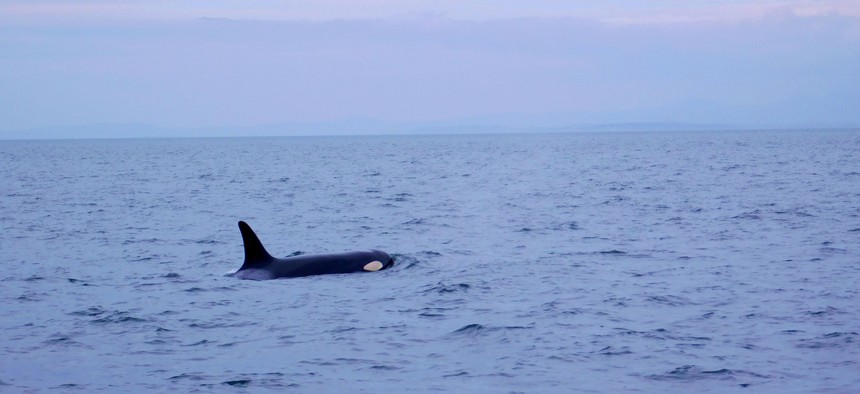Federal, Tribal and Local Officials Join Effort to Save Orca

The orca is part of an endangered population of whales in the northeastern North American Pacific Ocean. Shutterstock
The 4-year-old whale, summering off the coast of Washington, is emaciated.
Federal, tribal and state officials are working together to assess and determine the best course of treatment for an emaciated 4-year-old killer whale off the coast of Washington state.
The orca, designated as J50, is part of the endangered southern resident killer whales population, the smallest of four resident communities of orcas in the northeastern portion of the North American Pacific Ocean. Using drones, researchers were able to determine that the whale is emaciated and has a depression behind her blowhole known as peanut-head syndrome, caused by extreme loss of fat.
“It is very common for us to be working with other stakeholders—tribal, state—and really pulling together a collaborative effort to best respond to emergency situations,” Kristin Wilkinson, west coast regional stranding coordinator with the National Oceanic and Atmospheric Administration Fisheries, said Monday on a call about the ongoing efforts. “This situation is no different. We’re utilizing those partnerships … to provide the best possible medical treatments and sample collection and response effort for this individual whale.”
Teams of researchers, biologists and veterinarians are working to understand why the whale’s condition is deteriorating by monitoring her movements and collecting fecal and breath samples when possible. Samples collected so far did not conclusively indicate or rule out illness, officials said Monday.
“Certainly we have a strong sense of urgency,” said Lynne Barre, NOAA’s recovery coordinator for the endangered southern resident killer whales. “Her body condition is on par with a past situation we’ve seen where a calf did disappear, so we’re definitely very concerned. That’s what has really initiated this specific emergency response.”
Depending on the results of a thorough health assessment, treatment options could include feeding the whale live chinook salmon laced with medication. The fish would be provided by the Lummi Nation, which was performing a test run Monday without salmon in hand but could have them available as soon as Tuesday, Wilkinson said.
That plan would require approval from a separate division of NOAA, Barre said. It was submitted last week and is currently undergoing revisions.
“We’re taking it one step at a time, first to see whether it would even be possible to get live fish to J50 in particular without impacting the rest of the pod,” she said. “We’re still waiting for authorization from the headquarters office.”
The timeline for treatment is unclear and depends mostly on the location and availability of the pod. A fleet of boats—operated by citizen scientists, NOAA officials, recreational boaters, commercial whale-watch businesses and county researchers—are on the water reporting sightings, Barre said.
“We have a very solid network of people reporting sightings of the whales as soon as killer whales are seen so we can get folks on site to identify whether they’re southern residents and whether J50 is present,” she said.
Kate Elizabeth Queram is a Staff Correspondent for Government Executive’s Route Fifty and is based in Washington, D.C.
NEXT STORY: Destroyed By ’93 Flood, This Village Likely Spared St. Louis a Major Disaster





